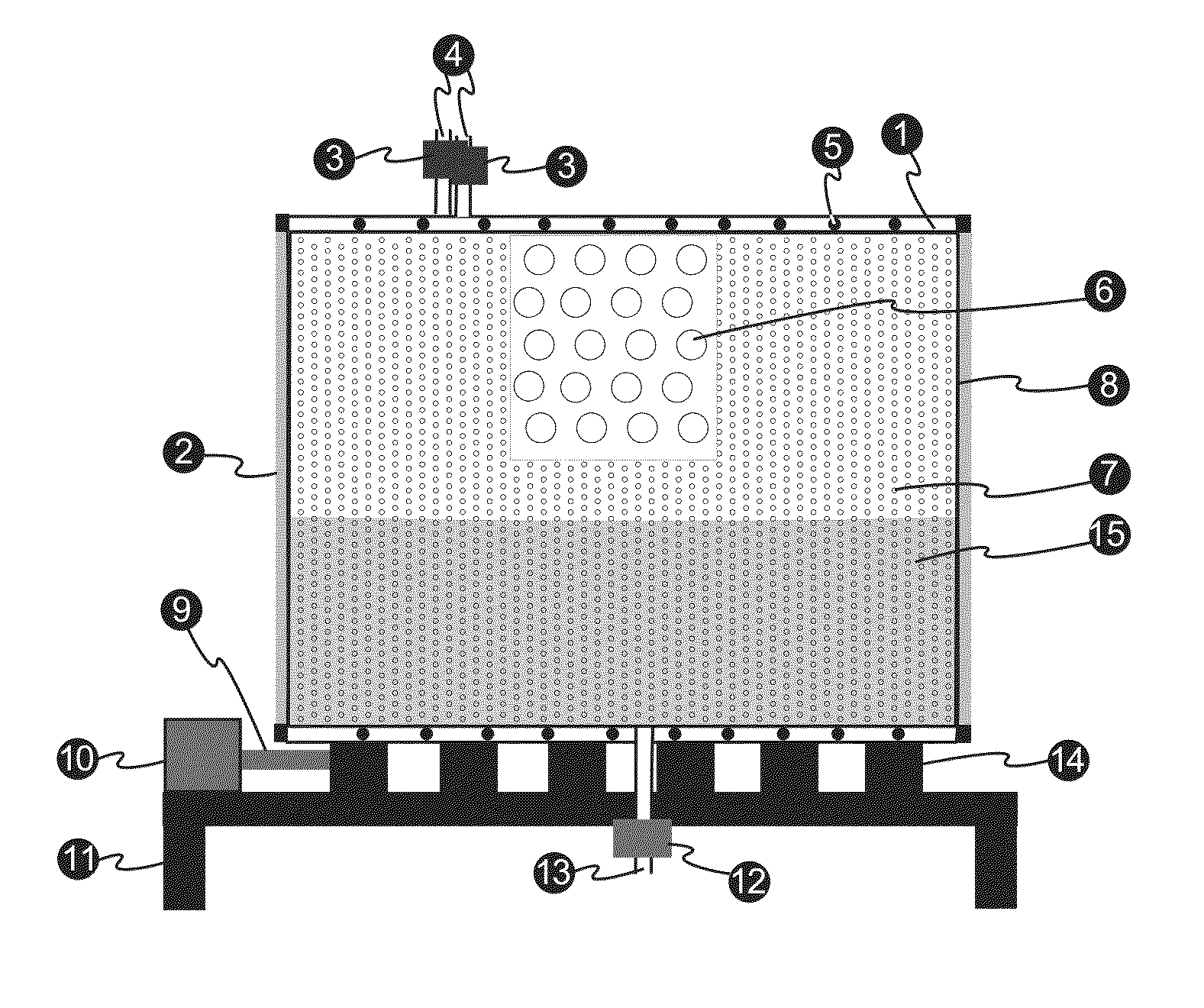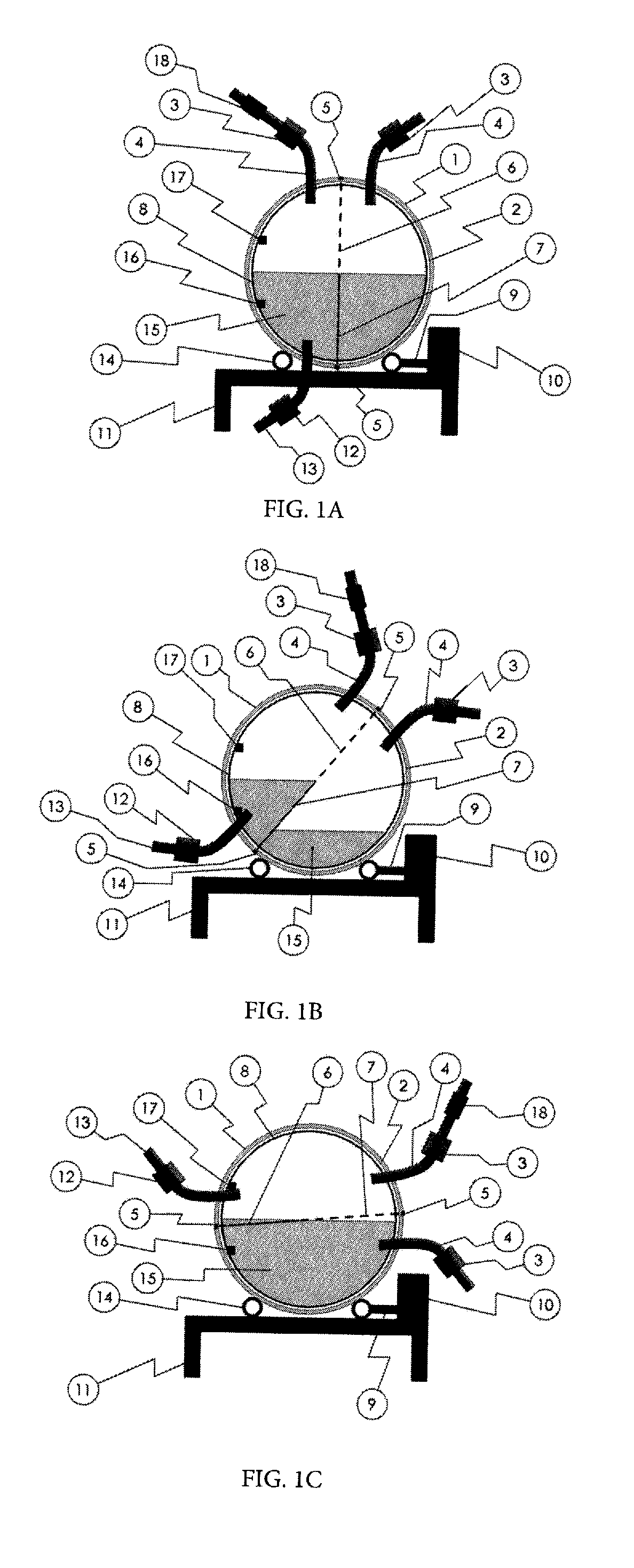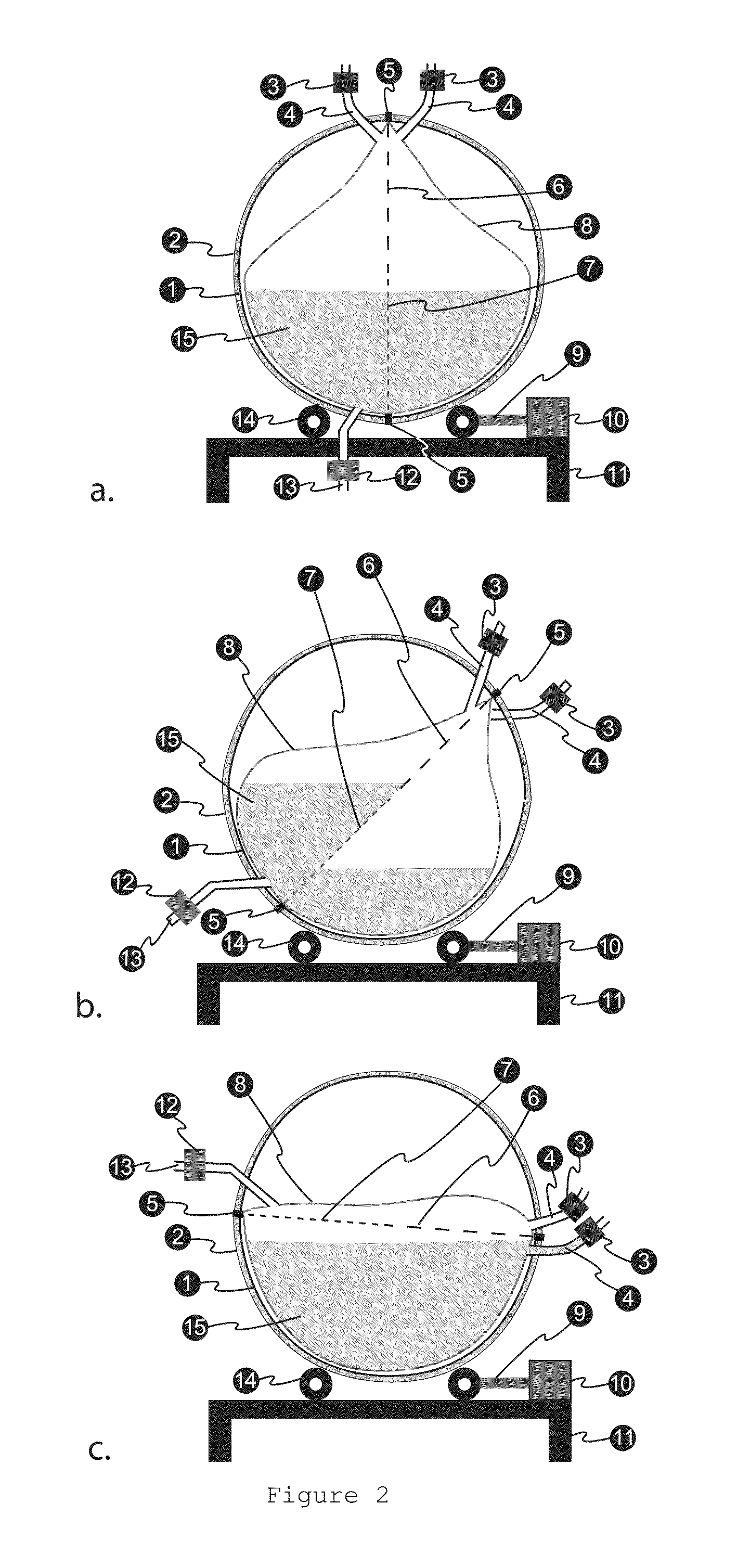Pivoting pressurized single-use bioreactor
a bioreactor and pressurized technology, applied in the field of pressurized hermetically sealed bags or bioreactors, can solve the problems of inability to easily reconfigure for new applications, inconvenient installation of piping and utilities, and high labor-intensive cleaning and sterilization operations, and achieve the effect of efficient mixing of nutrient media
- Summary
- Abstract
- Description
- Claims
- Application Information
AI Technical Summary
Benefits of technology
Problems solved by technology
Method used
Image
Examples
Embodiment Construction
[0020]The presently preferred embodiments of the invention are described with reference to the drawings, where like components are identified with the same numerals. The descriptions of the preferred embodiments are exemplary and are not intended to limit the scope of the invention.
[0021]A prior art bag is a flat, rectangular, “pillow-style” cell culture bag commonly used in rocking bioreactor applications, for example in the system of U.S. Pat. No. 6,190,913 entitled “Method for Culturing Cells Using Wave-Induced Agitation” filed Aug. 12, 1998. This prior art and other prior art bags are shown in FIG. 1-11 in the U.S. patent application Ser. No. 12 / 676,180. Another prior art bag is, which is hereby incorporated by reference.
[0022]The bag in the present invention (FIG. 1) is formed by seaming together two outer flexible impervious sheets 8 and a perforated septum 7 that has much higher porosity 6 in the center part adjacent to one of the edges forming two chambers capable of holding...
PUM
| Property | Measurement | Unit |
|---|---|---|
| size | aaaaa | aaaaa |
| volume | aaaaa | aaaaa |
| volumes | aaaaa | aaaaa |
Abstract
Description
Claims
Application Information
 Login to view more
Login to view more - R&D Engineer
- R&D Manager
- IP Professional
- Industry Leading Data Capabilities
- Powerful AI technology
- Patent DNA Extraction
Browse by: Latest US Patents, China's latest patents, Technical Efficacy Thesaurus, Application Domain, Technology Topic.
© 2024 PatSnap. All rights reserved.Legal|Privacy policy|Modern Slavery Act Transparency Statement|Sitemap



